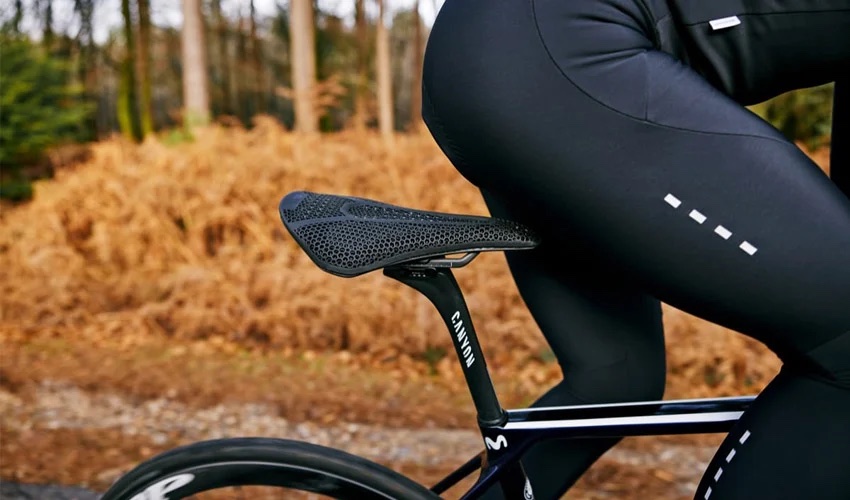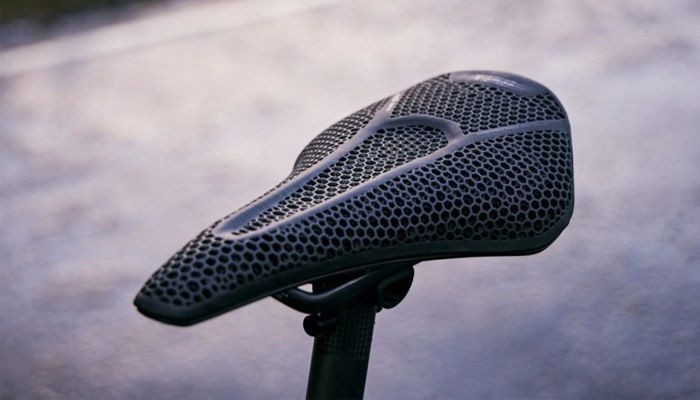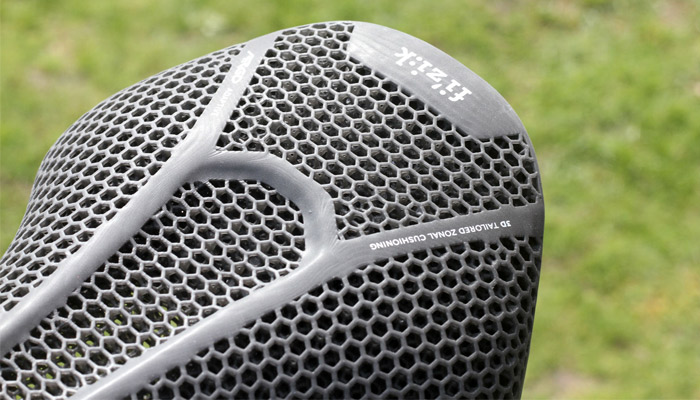Fizik 3D Prints Bicycle Saddles that Adapt to the Cyclist’s Position

Fizik is an Italian bicycle equipment brand that belongs to the Selle Royal group. Mainly known for its saddles and shoes for cyclists, the company recently unveiled a brand new concept of modular saddles for its Argo series. It interested us in particular because its shell is entirely 3D printed, using the process developed by the manufacturer Carbon. Available in different versions, the saddle uses a lattice structure that provides both comfort and performance to cyclists, while optimizing weight. In the 140 mm wide version with carbon rails, the saddle weighs only 190 grams!
In recent times, projects involving additive manufacturing and bicycles have been developing with lightning speed, especially ones that focus on the saddle, the key element for any cyclist. By relying on 3D printing technologies to design this component, brands can provide a better seat and therefore greater stability and comfort. This is mainly due to the use of topology optimization, which makes it possible to minimize the amount of material used depending on the load exerted, and therefore reducing the weight on a certain part while maximizing its strength.

Photo Credits : Fizik
Features of the Argo Adaptive saddle by Fizik
In this case, Fizik decided to use Carbon’s photopolymerization technology, called Digital Light Synthesis. In fact, the company has already been working with the American manufacturer since 2019. Together they created the Argo Adaptive, a bike saddle that combines both the Italian company’s expertise and the functionality of Carbon Design Engine software. This is an online lattice structure generator, that automates the lattice creation process. As a result, the teams were able to design a saddle with optimal damping by zone, depending on the loads exerted. Regardless of the rider’s posture or buttock position, the shape of the saddle remains adapted. The Argo Adaptive saddle therefore relieves pressure, especially when cycling uphill and in an aerodynamic position.
If we look at the characteristics of this saddle, you should know that there are two models of the Argo Adaptive: the R1 and the R3. The R1 has carbon rails and is available with a width of either 140 mm or 150 mm. As for the weight, you can roughly expect around 190 grams for the first size, and 196 grams for the second. The other model, the R3, has Kium rails, which increase its weight. The 140 mm version weighs 224 grams and the 150 mm version 230 grams. As for the price, the R1 model is available for €299, while the R3 costs €259.

The saddle was made using a 3D printing process with optimal zone damping (photo credits : Fizik)
This is yet another great example of the possibilities offered by additive manufacturing! Don’t hesitate to visit the Fizik website to find the saddle that will fit your needs. What do you think of the Argo Adaptive? Let us know in a comment below or on our Linkedin, Facebook, and Twitter pages! Don’t forget to sign up for our free weekly Newsletter here, the latest 3D printing news straight to your inbox! You can also find all our videos on our YouTube channel.






